Rethinking Public Sculpture
Blu³eprint by Faisal Abdu’Allah communes with the UW’s Abe Lincoln statue.
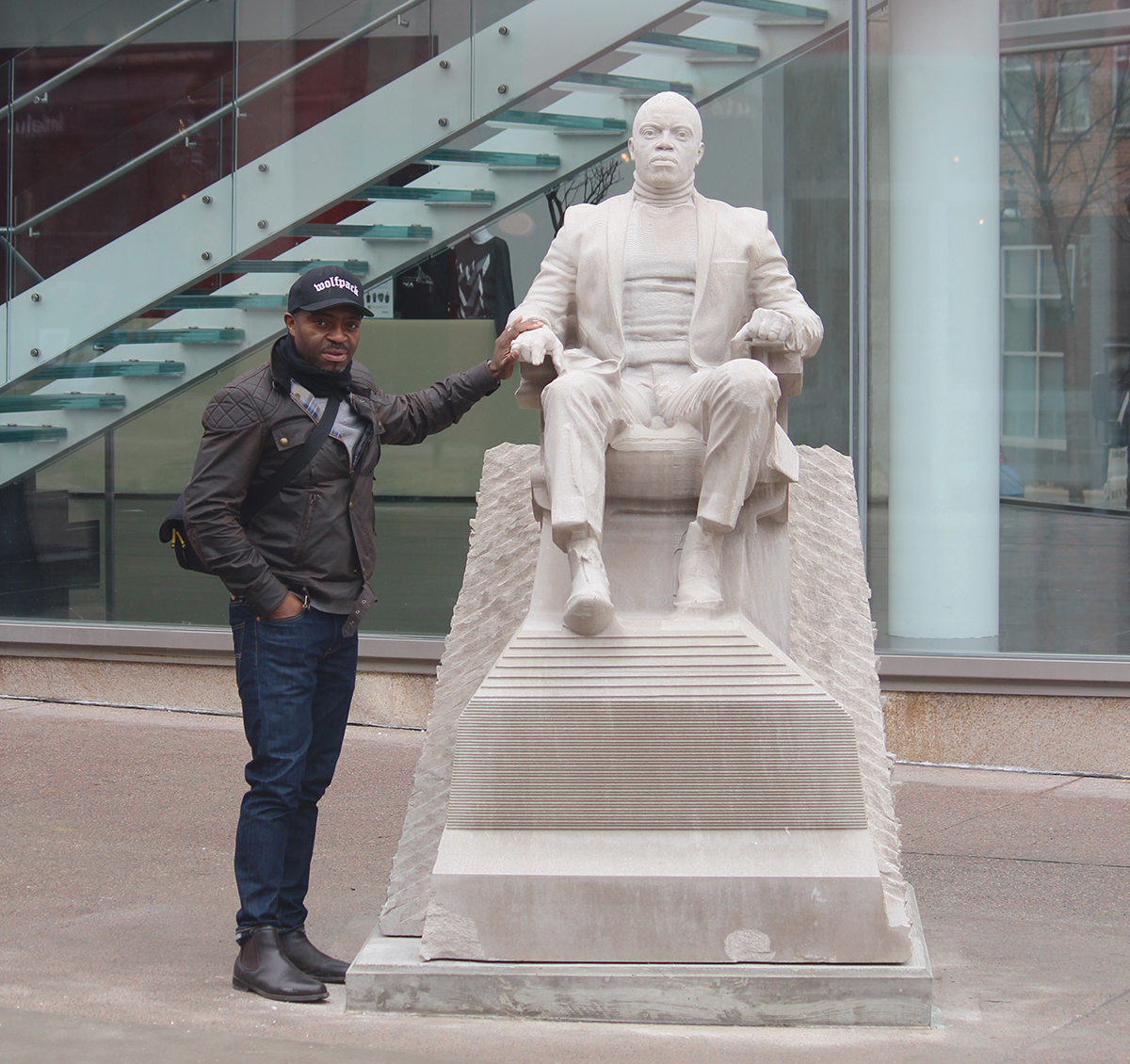
A provocative juxtaposition: the Lincoln statue (below) portrays a white man who embodies the United States’ complex racial history, while Abdu’Allah’s sculpture portrays himself in the modest setting of a barbershop. Kent Michael Smith / Courtesy of the Madison Museum of Contemporary Art
In his sculpture Blu³eprint, UW art professor Faisal Abdu’Allah portrays himself seated in a barber chair. If you’re walking down State Street, you’ll encounter the limestone monument outside the Madison Museum of Contemporary Art, which commissioned it for an exhibition of Abdu’Allah’s work.
And if you’ve just come from Bascom Hill, you’ll notice a resemblance to UW–Madison’s iconic Abraham Lincoln statue.
Both figures have a commanding presence. Both gaze stoically, arms at rest. But one portrays a white man who embodies the United States’ complex racial history, sitting on what might as well be a throne; the other a Black man in the more modest setting of a barbershop. It’s a provocative juxtaposition, particularly at a time when many public monuments are coming under fire and occasionally even coming off their pedestals.
The country is divided over which statues should stay and which should go, but Abdu’Allah proposes an artistic solution. Rather than removing artworks, he believes in inviting sculptors of color to create what he calls “counter-monuments.” Blu³eprint, for example, engages in dialogue with the Lincoln statue, presenting an alternate approach to commemoration.
Abdu’Allah is a professor of printmaking and associate dean for the arts in the School of Education. Last year, he was named Chazen Family Distinguished Chair in Art. He’s come a long way since his days in London barbershops.
That’s right — Abdu’Allah’s choice of a barber chair is not random. He hung out in salons during his youth, marveling over patterns the hairdressers made with their scissors. He became a barber himself, attended the Royal College of Art, and began incorporating barbershop imagery into his work.
To him, the barbershop is a place of renewal, with particular resonance in the Black experience. Hair — on the spectrum of kinky to straight — also has political and cultural connotations. And then there’s the fact that hair carries traces of our DNA, the very essence of who we are. Visitors can see how Abdu’Allah treats such rich themes when the Madison Museum of Contemporary Art opens the exhibition Dark Matter in September.
Blu³eprint has been up since spring, demanding attention on State Street. Abdu’Allah made the sculpture in collaboration with artist Martin Foot and Madison’s Quarra Stone Company, and he chose limestone as the medium because of its imperfections.
Those are suggestive of human imperfections, of course. Blu³eprint acknowledges that none of us are perfect, even if we do happen to be up on a pedestal.
Published in the Fall 2022 issue
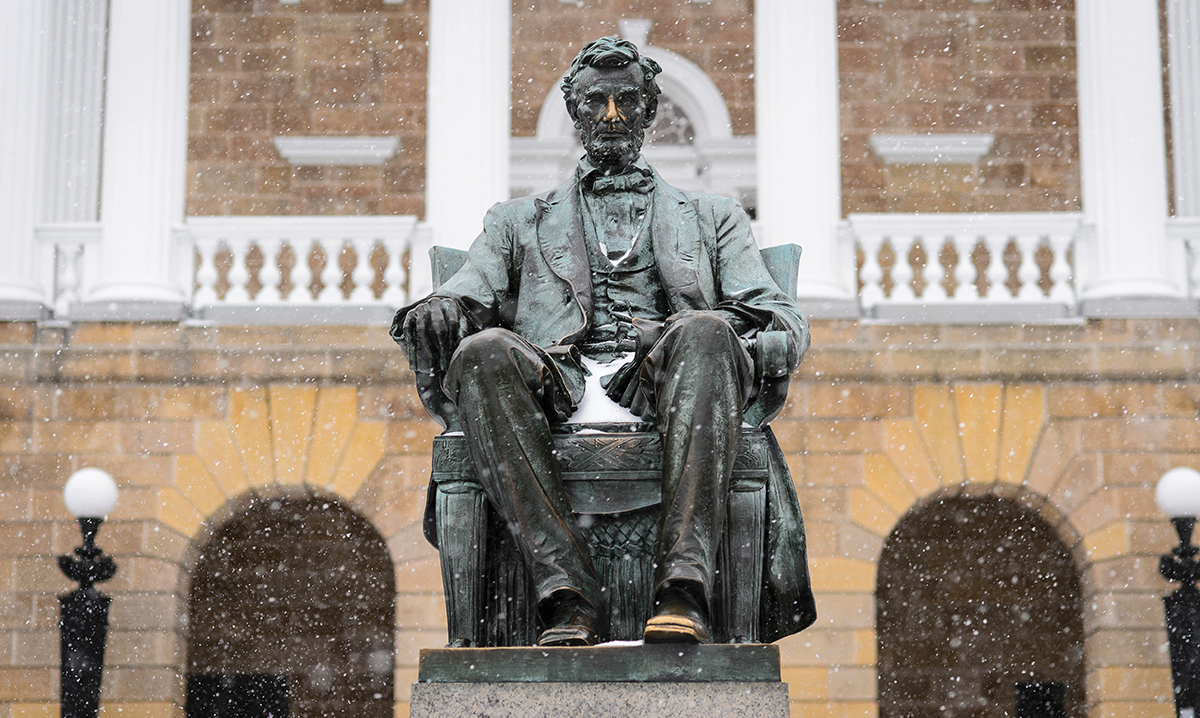
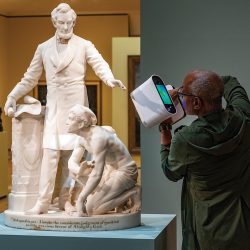
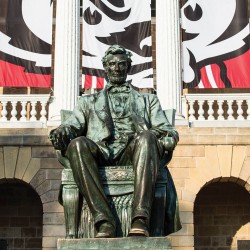
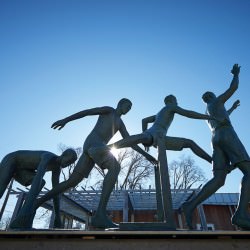
Comments
No comments posted yet.